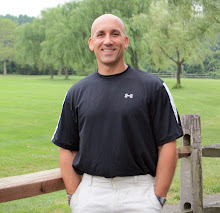Sport-Specific Training – But “Why?”
In my many discussions with those in my field (who I hold the highest regard), we all agree that there are many ways to become stronger. Some ways are safer than others and in some cases, more beneficial overall to the athlete but regardless, there is more than one way to skin a cat.
Because there are so many variations there are times when illogical approaches are suggested – approaches that further probing reveal a lack of understanding of form and function. Ask “why” an individual needs power cleans and you more than likely will hear a response such as “it builds explosiveness” and to which I would again ask “why”. Since their understanding is such that it is merely a regurgitated response from a well-known individual or because their favorite football team does it my second probe of “why” tends to stop them dead in their tracks, usually because they really don’t know why they are doing what they are doing and are just following along aimlessly. I’ve had many brief conversations with people who are sport-specific specific – brief because they can not intelligently explain to me why they need to be specific in the gym nor can they explain to me, for instance, why a leg press, squat, deadlift, lunge or any other deep knee bending movement would somehow differ in developing the muscles of the legs and hips. At that point the conversation usually terminates because they are without an answer or logical reason. Personally, it is beyond my comprehension why it so damn difficult to have someone understand that a person who is looking to improve their performance doesn’t need more than to work at improving their strength and conditioning and perform proper practice for said activity to improve.
Again, I’ll reference my own experiences. After my failed vest experience all I did to improve my basketball was work at my sport and performed resistance training. Hell, I didn’t even do any additional conditioning work because at the time I was training three times a week doing full body workouts for one set to muscular failure and just playing basketball all the time. Through this dedicated effort my knowledge of the game improved, experience was teaching me how to “anticipate” and “respond” better. My speed/quickness improved as well did my jumping (I was able to touch the rim at 5’7”) and not to mention my shooting range increased as well and I could play full court for hours. Instead of wasting time doing simulation work I was applying my efforts into the actual activities that were required to play my sport.
It’s All Vanilla To Me
I always tell a buddy of mine that with the countless number of ice cream flavors out there in the world, vanilla is still the number one favorite flavor. Vanilla is as plain and simple as you can get and yet it sits high as supreme in the ice cream world. Manufacturers add variety and invest countless hours and money into developing new and exciting flavors to wow the industry – and they do for a short time before everyone falls back on old faithful – vanilla. Vanilla, it’s simple, effective – it gets the job done, just like a straightforward strength program consisting of a handful of compound movements worked hard and consistently over time and proper practice of specific movements in your sport. Quite often this “vanilla” approach is shunned because of its simplicity and unfortunately, its advantages ignored. It’s an uncomplicated, established method that doesn’t need accreditation, sponsorship, extensive research or techno terms to define or describe –it’s just a plain old way of producing results that have benefited many an athlete over the course of many, many years. - Fred Fornicola
skip to main |
skip to sidebar
"Fred Fornicola is a training innovator and writer in an industry full of restricted thinking. He has listened, viewed, tried, and assimilated just about everything the world of exercise has put forth over the decades. His voice is
one of the few that keeps people's attention." - Randy Roach, Author of Muscle, Smoke and Mirrors
one of the few that keeps people's attention." - Randy Roach, Author of Muscle, Smoke and Mirrors


